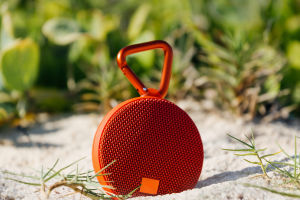If you're looking to bring some life and freshness into your home, there's no better way to do it than by adding some indoor plants. Not only do they enhance the beauty of any room, but they also help purify the air, making your living space feel healthier and more vibrant.
Today, we're diving into the best plants for home decoration. Whether you're a plant enthusiast or just starting, these plants will add a touch of nature to your home effortlessly. Let's get started!
Why Choose Indoor Plants?
Before we jump into specific plant recommendations, let's talk about why plants are such a great choice for home decoration. First, plants improve air quality by absorbing carbon dioxide and releasing oxygen. They can even help reduce indoor pollutants like benzene and formaldehyde. On top of that, plants are known to boost mood, reduce stress, and enhance productivity. It's no surprise that more and more people are adding greenery to their living spaces.
Low Maintenance Plants for Beginners
If you're new to indoor gardening, we recommend starting with plants that don't require too much care. These plants are perfect for busy people or those who may not have the greenest thumb.
One great option is the snake plant (also known as mother-in-law's tongue). This hardy plant can survive in low light and needs very little water. Its tall, upright leaves make it a stylish addition to any room. Another easy-care plant is the pothos. This trailing plant is known for its heart-shaped leaves and can grow in a variety of lighting conditions. Whether you hang it in a pot or let it trail down from a shelf, it adds a beautiful touch to any space.
If you prefer a plant with a bit more structure, try the ZZ plant. This one is nearly indestructible and can tolerate neglect. It's perfect for people who often forget to water their plants. Simply place it in a spot with indirect light, and it'll thrive.
Brightening Up Your Space with Flowering Plants
For those who want to add a pop of color to their home, flowering plants are an excellent choice. A peace lily is an elegant option with glossy green leaves and beautiful white flowers. It also thrives in low to medium light, making it perfect for almost any room. Another great option is the orchid. With its delicate, colorful flowers, an orchid can make a bold statement in any space. While orchids do need a bit more care than some of the hardier plants, they're well worth the effort.
For a bit of fragrance along with color, consider a jasmine plant. Its sweet-smelling flowers can fill your room with a lovely scent. Keep it near a window with plenty of natural light, and it will reward you with flowers for months.
Small Plants for Cozy Spaces
If you're looking to add plants to smaller spaces or want to avoid overwhelming your room with large plants, small indoor plants are the way to go. Succulents are a fantastic choice for compact spaces. These low-maintenance plants come in various shapes and colors and look great on windowsills, coffee tables, or even desks. You can mix and match different types to create a mini indoor garden.
Another great small plant is the aloe vera. Not only is it a great plant for your health (its gel can be used to soothe burns), but its fleshy, spiky leaves make it an interesting addition to any home. Aloe vera thrives in bright light and needs very little water, making it another easy-care option.
Plants for Low Light Environments
Not all homes have plenty of sunlight, but that doesn't mean you can't enjoy indoor plants. If your home has low light, there are still plenty of plants that will thrive. The spider plant is one such option. Known for its long, arching leaves and tiny white flowers, the spider plant is a great choice for homes with little light. It's also easy to propagate, so you can easily share it with friends!
Another good choice for low-light environments is the cast iron plant. As the name suggests, this plant is tough and can tolerate even the darkest corners of your home. Its broad, dark green leaves add a touch of elegance to any room, making it a great addition to your low-light spaces.
How to Care for Your Home Plants?
Taking care of indoor plants might seem intimidating, but it's not as difficult as it seems. Here are a few tips to help you keep your plants happy:
1. Watering: Most plants prefer to be watered when the top layer of soil feels dry. Be careful not to overwater, as this can lead to root rot.
2. Lighting: Place plants where they'll get the right amount of light. Some plants, like succulents, need a lot of sunlight, while others, like the snake plant, thrive in low light.
3. Fertilizing: During the growing season (usually spring and summer), fertilize your plants every 4-6 weeks to give them a nutrient boost.
4. Pruning: Regularly remove dead or yellowing leaves to keep your plants looking fresh and healthy.
Adding plants to your home can make a huge difference in how your space feels. Not only do they brighten up your rooms, but they also contribute to a healthier environment. Whether you're a beginner or a seasoned plant lover, there's a plant out there that's perfect for your home.
So, Lykkers, which plants are you thinking about adding to your home? Do you have any plant care tips to share? Let us know in the comments! We'd love to hear your thoughts and experiences with indoor plants. Happy decorating! 🌿


